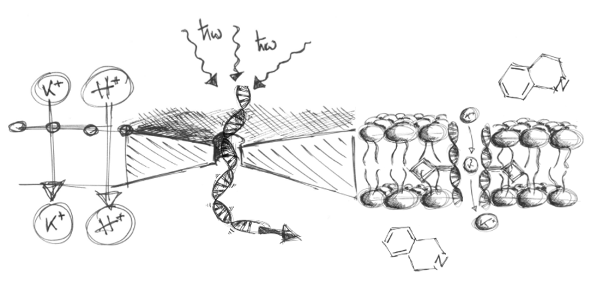
Collaborative areas include
Membrane transport
Nanoscale processes are central for living organisms and cell's operation relies on objects at this scale: DNA, proteins and biomolecules. Understanding of bio-nano behaviours enables better drugs, as well as harnessing the self-assembly in the broadest sense. Membrane physics group, led by Dr Ulrich Keyser specialises in:
- Single molecule biosensing using nanopores
- Label-free quantification of drug transport through lipid membranes
- Ionic transport through 2D materials
DNA at the nanoscale
The nanoscale organisation of the DNA inside cells, known as chromatin, is one of the great marvels of physical biology. By forming chromatin, a complex of DNA and histone proteins, the DNA manages to avoid entanglement, compresses enormously to fit inside tiny nuclei and maintains exquisite control over the accessibility of the data it carries. Dr Collepardo's group uses computer modelling to investigate the principles behind chromatin structure modulation and inform the design of new chromatin-inspired nanomaterials.
Nano-bio technologies
Nano-Bio Technologies have seen one of the earliest translations of nanoscience into biomedical technologies, with uses in cellular imaging and mechanisms, sensing, regeneration, and targeting of disease. The NanoDTC research in this area includes projects in:
- ultra-high resolution imaging of biological (sub-cellular) entities,
- microfluidic assays and coded nanotag sensing,
- tip-neuron interactions and nano-mechanical cues for neuron re-growth,
- scaffolds for bone regeneration,
- ultrahigh sensitivity biomolecular sensing and neurotransmitter assays through plasmonics,
- ultra-high-speed genetic sequencing using nano-apertures,
- nanoparticle toxicity,
- insect adhesion mechanisms at the nanoscale.
Find out more, and find relevant contacts here.
